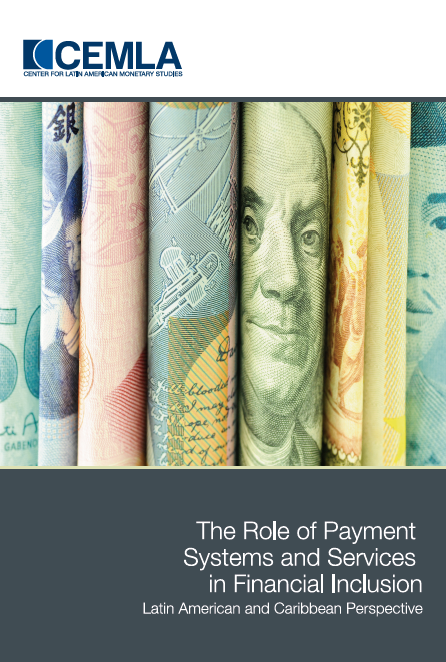
The Role of Payment Systems and Services in Financial Inclusion Latin American and Caribbean Perspective
Electronic retail payment systems and services (ERPS) consist of different systems and platforms, payment products and services that allow firms, individuals, government and other economic agents to transfer money on a daily basis without having to use cash.
ERPS are becoming increasingly more prevalent in today’s economy, thanks to the dynamism digital innovation has brought with new mobile and online payment solutions and products. Meanwhile, international efforts continue to appear for promoting universal access to and use of financial services in an attempt to reduce poverty and improve opportunities and living standards for people that do not use such services.
As a result of this interaction between an intensive agenda focused on promoting financial inclusion and the greater presence and participation of ERPS in economic activity, the latter represent a highly potential instrument for fostering financial inclusion as individuals and firms interact in the economy via the payments they make to each other through different instruments and channels.
Latin American and Caribbean countries are at a particularly important situation in this matter. On the one hand, the degree of bankarization still needs to deepen in most countries. On the other, payment systems and services infrastructure has made significant progress, posing different questions as regards how to move forward with financial inclusion through payments.
Central banks have an important role to play in this area given their responsibility to preserve the smooth functioning of payment systems and, more recently, to support efforts for achieving greater financial inclusion.
Thus, under the framework of the Working Group on Payment System Issues of Latin America and the Caribbean (WGPS-LAC) a subgroup of five central banks, entitled Subgroup for Payments and Financial Inclusion (S-PAFI), was created in April 2014 with the purpose of analyzing with more detailed information the interaction of payment systems and services with financial inclusion.
To that end, the S-PAFI conducted a survey among the central banks of Latin American and Caribbean countries, the results of which are presented here. In particular, the survey dealt with the following aspects: Definition of financial inclusion, a general framework of what ERPS consist of, the role performed by different components of ERPS in financial inclusion strategies implemented in the region, legal and operational aspects of ERPS that influence financial inclusion and the role of payment industry innovations in inclusion.
The report is important because the approach of the survey provides a multidimensional perspective on different ERPS interactions with financial inclusion in Latin American and Caribbean countries. The conclusions offer a set of observations and possible actions central banks could adopt as a basis for moving forward with national and regional agendas on electronic retail payments for promoting financial inclusion and access.

The Role of Payment Systems and Services in Financial Inclusion
Full Paper | PDF Format | Size 1.49 MB

